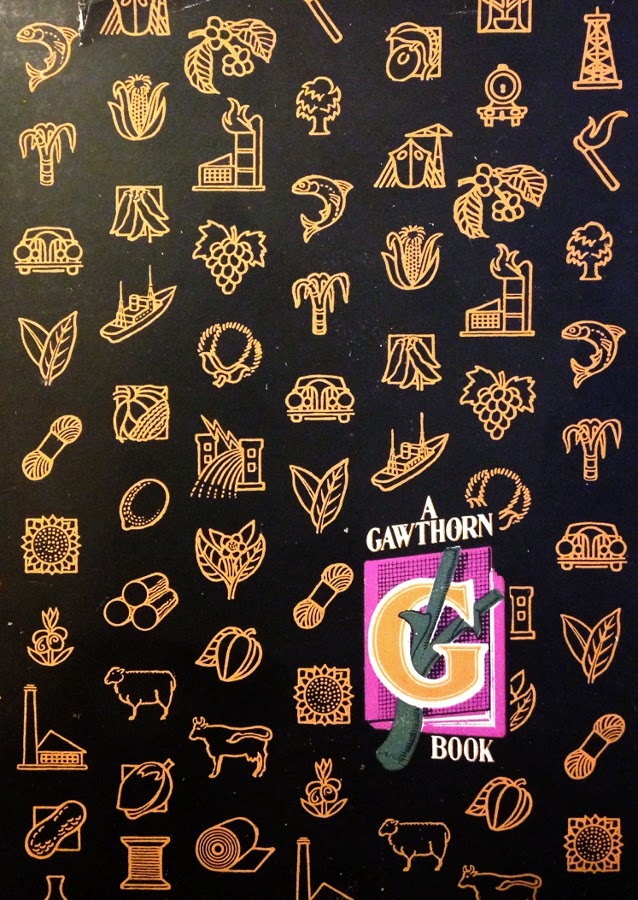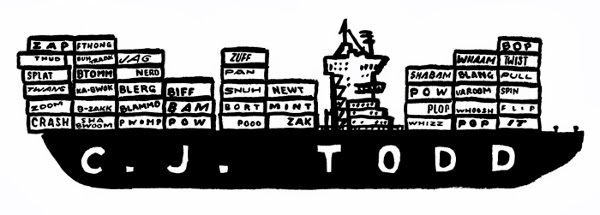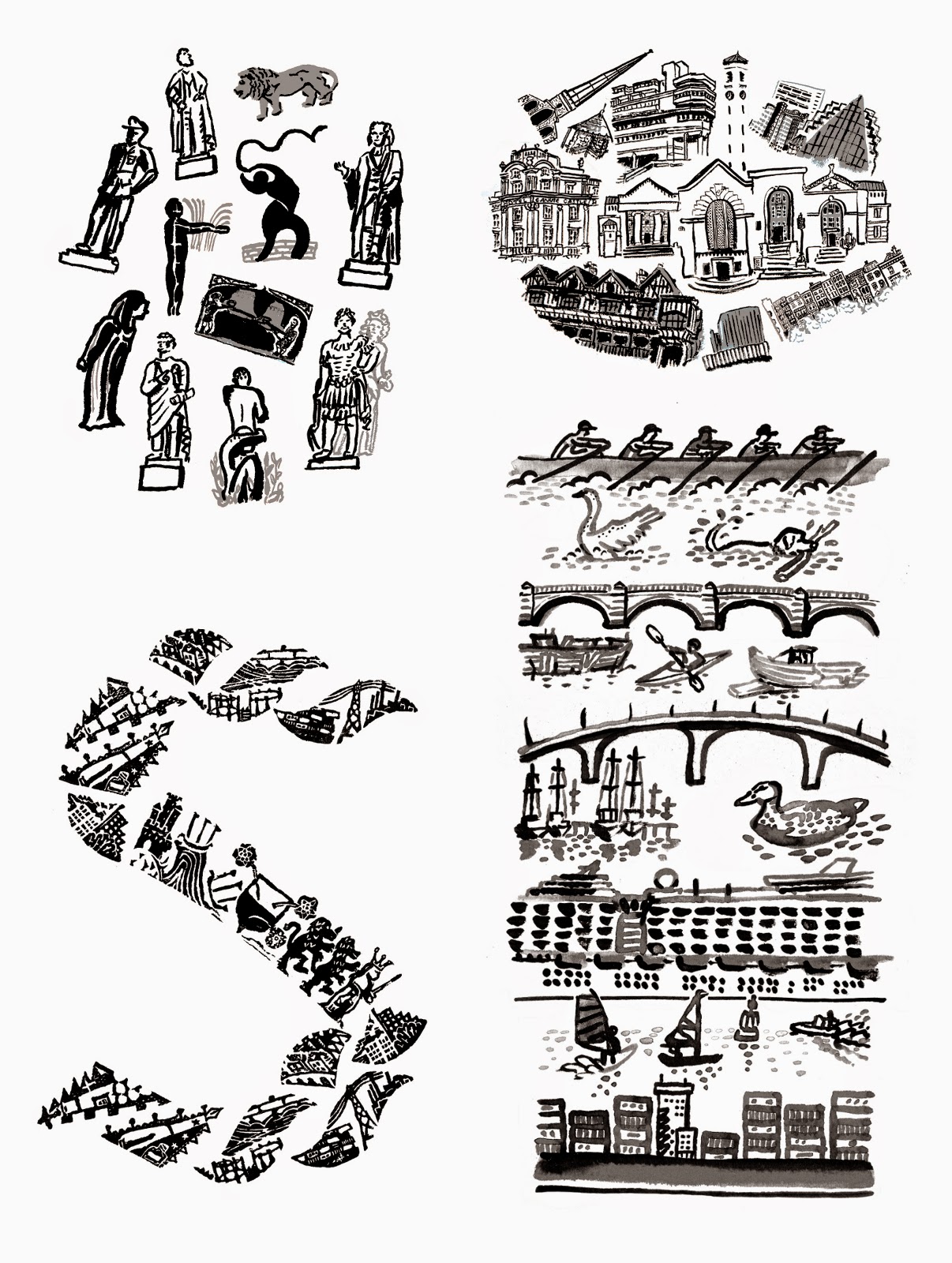 |
Petersfield Bookshop: a dolls'
house in the print room. |
Every second hand bookshop is a temptation. Old books, in piles and rows, are spreading along my shelves and everything else is balanced halfway over an edge. I think I spend only as much time such places as is wise, to keep the process gentle.
Certain old series are always represented -
Britain In Pictures, the
King Penguins, the
Discovering series - some needing more judicious inspection than others before you give in to their charms. I've made some prize acquisitions in
Penguin Modern Painters. I'll take almost anything illustrated by Osbert Lancaster but I'm holding off from Fougasse.
This weekend I walked into the
Petersfield Bookshop. There's a lot of it: an impressive rarities cabinet; a room full of prints, with plan chests, an index chest for postcards and a big dolls' house; frames lining the stairs; a glimpse of rolling stacks for storage. I browsed Local History, Adventure Fiction and the vintage ends of Biography and Sports. It was the London section that forced me into taking advantage of the shop's brief sale (29th November to 13th December!) for two books - although only one was in the right section.
London Explorer
Peter Jackson's cartoon strip in The London Evening News began in the late 40s as "London is Stranger than Fiction", full of extraordinary and characterful stories. The second collected volume is the "London Explorer", strips dense with encyclopaedic information, to be pored over on public transport or cut out and given to a nephew or niece.
And Jackson was an encyclopaedia. Years later, the Ephemera Society gave him their Samuel Pepys medal.
Read the society's history here if (like my friends Emma Butcher of
Let It Be Printed and Adam Smith of
The South Country) you have brimming boxes of printed matter. Even in the early 50s, according to the Evening News editor's foreword, "
Jackson's home contains one of the most comprehensive private collection of London lore including mellowed and yellowed books, magazines and newspapers, cuttings and scores of notebooks."
 |
| London Explorer: "These houses are a sham" |
In this book the strips are arranged into chapters ("The Charm of London's West End, "The Gates and Pumps and City Walls", etc.) with accompanying text by W Crawford Snowden and, of course, interspersed with adverts for department stores, watches, sherry, shaving foam and a new type of bathtub for infants. There's a better explanation at
Bear Alley Books (for the later collection of all the strips) and it's worth casting an eye over the obituaries for Peter Jackson, from 2003 (
Guardian,
Independent).
 |
| London Explorer: "Horrid Murder" |
World Wealth In Maps
 |
World Wealth In Maps:
Map 11: Central Russia.
"But the Ural region has one drawback.
It lack good coking coal..." |
How could I resist such a monolithic title? Here is another newspaper artist - the News Chronicle's Stanley Harrop. His
31 entirely new full-colour maps show the principal raw materials of every part of the world and the lines of international transport. From the dustjacket, "
No modern school should deny its fascinating store of information to those who will one day grapple with the problems of the future." The bright, colour-coded maps are glorious and it ends with a glossary of lesser-known products and commodities, from alfalfa, alpaca and ambergris to yam and yerba-mate.
The text about Central Russia mentions "The first factory in the world to produce "Polar sugar." Russian scientists have discovered that from the lichen which covers vast tracts of this northern territory a crystalline glucose can be produced which differs only slightly from ordinary sugar."
What a great children's science story, which I guess came to nothing. I found another mention in The Children's Newspaper, in 1944. The increasing rubber production from kok-sagyz dandelions seems to have been a goer.
 |
World Wealth In Maps:
Map 24. Eastern United States.
"Pittsburgh stands for hardware ;
Massachusetts for woollen and cotton goods" |
As for a date, research gives me 48, 53 and a school edition in 58. The publisher, Percy Gawthorn / Raymond Fawcett (I'm not entirely sure of the relationship between the two forces), was responsible for The Empire Youth Annual from about 46 to 64. I found 48 last year and other informative, outdated home textbooks, like
Britain Past And Present or
The Mastery Of Water, call to me from every crooked bookshop.
What is the appeal of these educational children's books from the end of Empire? The noble aim, that of understanding the whole world and presenting it to the leaders of the future, seems quaint now: was it really that simple in those days? The patriotism is subtle (apart from the pink on the world map) but I think it is evident simply from the existence of the book - presenting proud Britain, proud London, essentially unchanged and undimmed by the Blitz, still the source of impartial knowledge gathered intrepidly, and the source of pride for every child. But these books are not just boy's-own derring-do: there's at once a very up-to-date scholarly rigour and a simplistic post-war optimism to the packaging of an exciting, burgeoning world for enquiring young minds.
Read about this time in The Open University's "
Selling Empire: Epilogue – the slow death of heroism?"
 |
Map key icons on the dustjacket
of World Wealth In Maps. |
So, here are two attractive books that show exactly what I'm a sucker for:
- Musty, foxed old books that look like they came from my parents' childhood,
- Maps, labels and information laid out to understand,
- Dense presentation to pore over cosily,
- 1950s optimism, before the 60s and 70s made the future a bad thing,
- London,
- The book that was filed backwards on the shop shelf.























